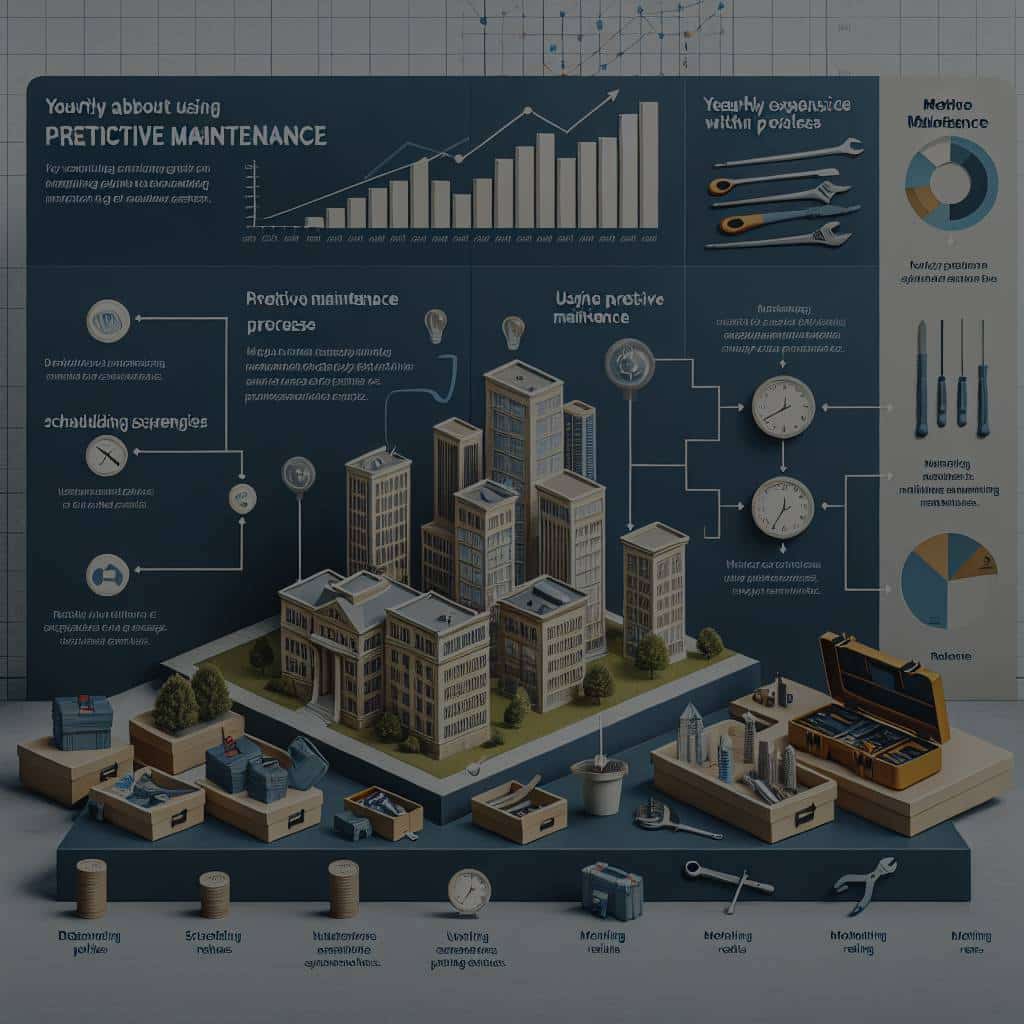How to Use Predictive Maintenance to Improve the Lifespan of Real Estate Assets?

In this digital age, the concept of predictive maintenance has emerged as a game-changer for several industries, including real estate. This proactive approach empowers you to foresee potential problems and deal with them before they escalate. It’s all about making data-driven decisions to enhance equipment performance, reduce downtime, and consequently improve the lifespan of your real estate assets.
Predictive maintenance is a proactive maintenance strategy that revolves around predicting equipment’s future faults and failures. It leverages data, machine learning, and algorithms to estimate when equipment might fail so that maintenance can be planned in advance. This is a significant step up from preventive maintenance, which is based on schedule and often leads to unnecessary equipment checks or changes.
Avez-vous vu cela : What Are the Financial Impacts of the UK’s Energy Performance Certificates on Property Values?
Predictive maintenance brings a plethora of benefits to the table. It reduces unnecessary downtime and enhances equipment efficiency. It helps prevent unexpected equipment failures and, most importantly, it saves you time and money by optimizing the maintenance routines.
In a building, predictive maintenance would involve the use of sensors and state-of-the-art software systems to collect and analyze data on various assets, such as HVAC systems, elevators, electrical systems, etc. These systems continuously monitor the condition of the equipment, collecting data on parameters like temperature, vibration, and pressure, to name a few.
A découvrir également : How to Design Child-Friendly and Safe Living Environments in Urban Real Estate?
These parameters are then fed into a predictive model that uses machine learning to forecast potential failures. For example, if the system detects that an elevator’s temperature is consistently higher than average, it might signify a potential problem that could lead to a breakdown. As a result, maintenance can be scheduled before the elevator breaks down, causing inconvenience to the building’s occupants and possibly incurring higher repair costs.
The implementation of predictive maintenance involves several key elements. To start with, you need a comprehensive asset management plan. This plan should include a detailed inventory of all the equipment in your property, along with their individual maintenance schedules and histories.
Next, you would need to invest in appropriate technology: sensors to monitor your equipment, software to collect and analyze the data, and perhaps even machine learning algorithms to make accurate predictions. And of course, you would need a team that’s trained and ready to respond to the insights generated by your predictive maintenance system.
Remember that predictive maintenance isn’t an excuse to avoid regular condition checks. Instead, it’s a tool to help you identify potential problems early and take proactive measures.
The future of predictive maintenance in real estate looks bright, with more and more property managers harnessing the power of data and machine learning to make smarter decisions. According to a report by MarketsandMarkets, the predictive maintenance market is expected to reach $12.3 billion by 2025, up from $4.0 billion in 2020.
These numbers are a testament to the growing recognition of predictive maintenance as a catalyst for improving the lifespan and performance of real estate assets. As technology continues to evolve, expect to see even more sophisticated predictive maintenance tools that can detect and diagnose a wider range of equipment problems.
Indeed, predictive maintenance represents the future of asset management in real estate. By adopting this data-driven approach, you can not only improve your building’s performance but also greatly enhance its lifespan, ultimately leading to more efficient operations and significant cost savings. And as technology continues to evolve, we can expect even more advancements in this exciting field, paving the way for smarter, more efficient real estate asset management.
Predictive maintenance indeed holds numerous advantages for real estate, and its implementation can bring significant value to your assets. One of the primary benefits of predictive maintenance is that it can reduce maintenance costs. By identifying potential issues before they become serious, you can avoid the high costs associated with major repairs.
Furthermore, predictive maintenance can contribute to extended asset lifespan. With real-time monitoring, you get to understand the performance of your assets better. This understanding enables you to identify optimal maintenance schedules, thus reducing wear and tear and prolonging the life of your assets.
Moreover, predictive maintenance helps to improve the asset performance. By ensuring that assets are always in good working condition, performance is optimized, resulting in enhanced efficiency and productivity. It also allows for better property management. By having a clear understanding of when maintenance is due, you can plan better, thus preventing disruption to the operation of your building.
The ability to anticipate equipment failures also improves safety. Faulty equipment can pose a risk to the building’s inhabitants. Predictive maintenance aids in mitigating these risks, making the building a safer place for its occupants.
The real estate industry is increasingly recognizing the immense potential of predictive maintenance. As a proactive maintenance strategy, it offers remarkable benefits such as reduced maintenance costs, extended asset lifespan, optimized asset performance, efficient property management, and enhanced safety.
Implementing predictive maintenance involves adopting cutting-edge technologies like sensors, data analytics, and machine learning algorithms. It requires a comprehensive asset management plan, an investment in technology, and a team ready to respond to insights generated from your predictive maintenance system.
The future of predictive maintenance in real estate is undoubtedly promising. As technology continues to advance, we can anticipate even more sophisticated tools that can identify potential issues more accurately and in real-time. This will further improve the effectiveness of maintenance strategies, making buildings smarter and more efficient.
In conclusion, embracing predictive maintenance is no longer a luxury but a necessity for the forward-thinking real estate professional. It’s a transformative approach that will revolutionize asset management, encouraging more proactive and less reactive practices.
